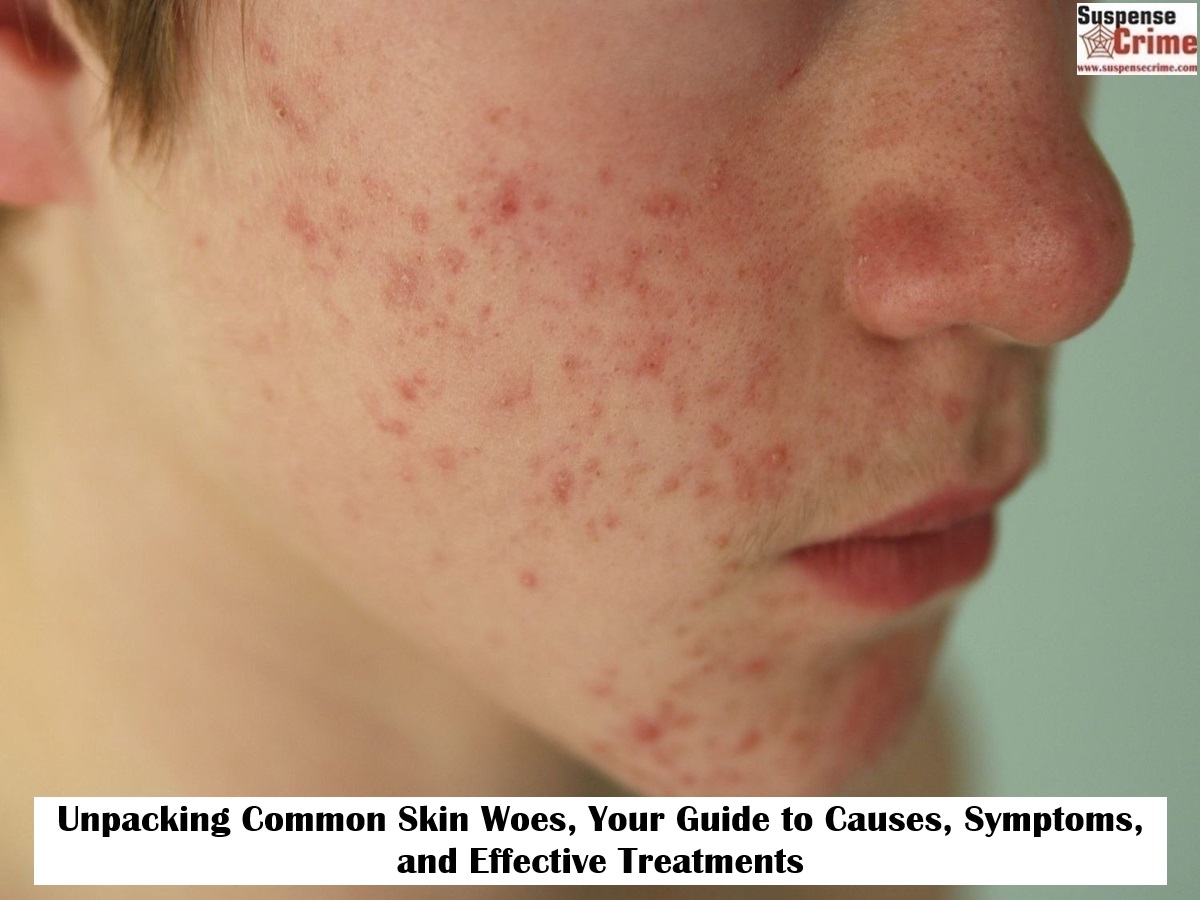
Suspense crime, Digital Desk : Our skin, the body's largest organ, is a complex shield that protects us from the outside world. But it's also prone to a myriad of issues, from the common annoyance of a pimple to the persistent discomfort of chronic conditions like eczema or psoriasis. Understanding what's going on when your skin acts up can be daunting, but armed with the right information, most common skin problems are manageable. This comprehensive guide aims to demystify many of the skin challenges people face, breaking down their causes, symptoms, and practical tips for treatment.
While each skin condition is unique, many share underlying triggers and similar manifestations, making it easy to get confused. Let's look at some of the most frequently encountered issues:
The Usual Suspects: Common Inflammatory & Chronic Conditions
- Acne: This isn't just a teenage rite of passage. Characterized by pimples, blackheads, whiteheads, and cysts, acne arises when hair follicles become clogged with oil (sebum) and dead skin cells. Hormonal shifts, diet, stress, and certain medications can all trigger or worsen breakouts.
- Eczema (Atopic Dermatitis): Identified by itchy, red, dry, and inflamed patches of skin, eczema often indicates a compromised skin barrier. It's frequently linked to genetics, allergies, and environmental irritants like soaps, detergents, or even certain fabrics.
- Psoriasis: An autoimmune condition where skin cells multiply too rapidly, leading to thick, red patches covered with silvery scales. It can be incredibly itchy and painful, and flares are often triggered by stress, infections, or certain medications.
- Rosacea: Often mistaken for acne, rosacea typically causes redness, visible blood vessels, and small, red, pus-filled bumps, primarily on the face. Triggers can include spicy foods, hot beverages, alcohol, stress, and sunlight.
- Hives (Urticaria): These are itchy, red, raised welts that appear suddenly on the skin, often as a reaction to allergens like certain foods, medications, insect stings, or even stress and temperature changes.
Other Frequent Culprits: Infections & Environmental Reactions
Fungal Infections (e.g., Ringworm, Athlete's Foot, Jock Itch): Caused by fungi that thrive in warm, moist environments, these infections typically present as itchy, red, scaly, and sometimes ring-shaped rashes. They're contagious and spread through direct contact.
Contact Dermatitis: This itchy rash develops when your skin comes into contact with an allergen (like poison ivy, nickel, or certain cosmetics) or an irritant (like strong detergents or solvents).
Sunburn: An inflammatory reaction to overexposure to ultraviolet (UV) radiation, leading to red, painful, and sometimes blistering skin. Prolonged or severe sunburn increases skin cancer risk.
Dry Skin (Xerosis): Extremely common, especially in dry climates or during winter. It results from a lack of moisture in the outermost layer of the skin, leading to flakiness, itching, and tightness.
Warts: Small, rough growths on the skin caused by the human papillomavirus (HPV). They are contagious and vary in appearance depending on their location.
Understanding Causes & Symptoms: A General Outlook
While each condition has its unique signature, common threads often run through their origins:
- Genetics: Many chronic skin conditions have a hereditary component.
- Environmental Factors: Pollution, allergens, irritants, extreme temperatures, and sun exposure play significant roles.
- Lifestyle: Stress, diet, hygiene practices, and smoking can all influence skin health.
- Underlying Health Conditions: Sometimes, a skin problem is a visible manifestation of an internal health issue.
- Infections: Bacteria, viruses, or fungi can directly cause skin problems.
Symptoms can vary widely but commonly include redness, itching, scaling, bumps, pustules, dryness, swelling, and discoloration.
Treatment and Management Tips: Finding Relief
The good news is that most skin problems are manageable, and many can be treated effectively. Here are general approaches and tips:
Seek Professional Diagnosis: This is the most crucial step. Self-diagnosis can be misleading. A dermatologist can accurately identify the condition and recommend the best course of action.
Topical Treatments: Creams, ointments, lotions, and gels (e.g., corticosteroids for inflammation, retinoids for acne, antifungals for infections) are often the first line of defense.
Oral Medications: For more severe or widespread conditions, doctors may prescribe oral antibiotics, antifungals, antihistamines, or immunomodulators.
Lifestyle Adjustments:
- Hydration: Drink plenty of water and use moisturizers regularly.
- Sun Protection: Always use broad-spectrum SPF, wear protective clothing, and seek shade.
- Gentle Skincare Routine: Use mild, fragrance-free cleansers and avoid harsh scrubbing.
- Stress Management: Stress can trigger or worsen many skin conditions; practice relaxation techniques.
- Balanced Diet: Focus on whole, unprocessed foods. Some find certain foods exacerbate their conditions.
Identify and Avoid Triggers: Pay attention to what makes your condition worse – be it certain foods, cosmetics, fabrics, or environmental factors.
Your skin is a mirror of your overall health. While common, persistent or worsening skin problems should always prompt a visit to a healthcare professional. With proper understanding, timely diagnosis, and consistent care, you can effectively manage these common skin woes and achieve healthier, more comfortable skin.
Read More: Five Effective and Natural Home Remedies to Cure Dandruff in Kids and Adults

 Share
Share



